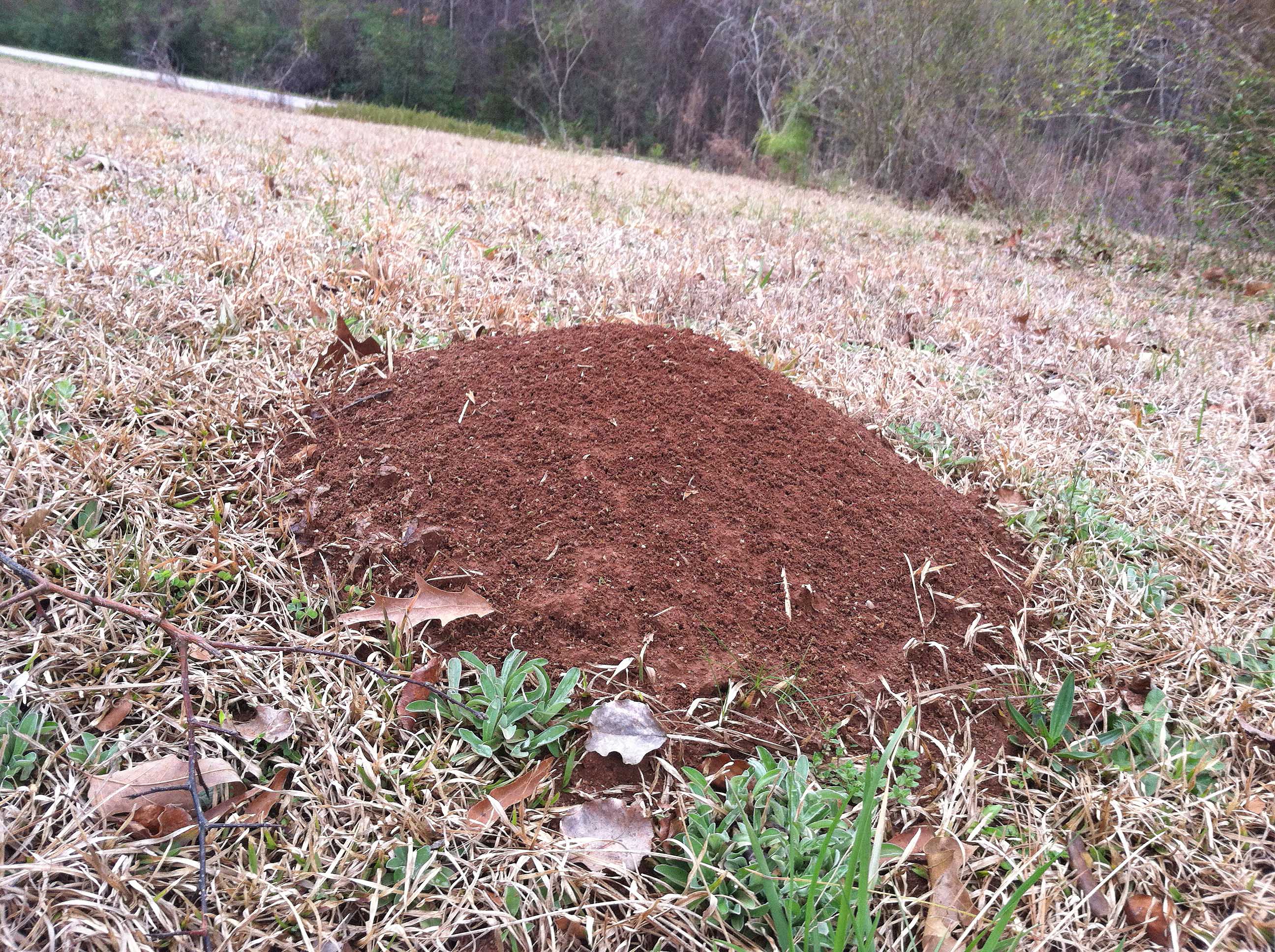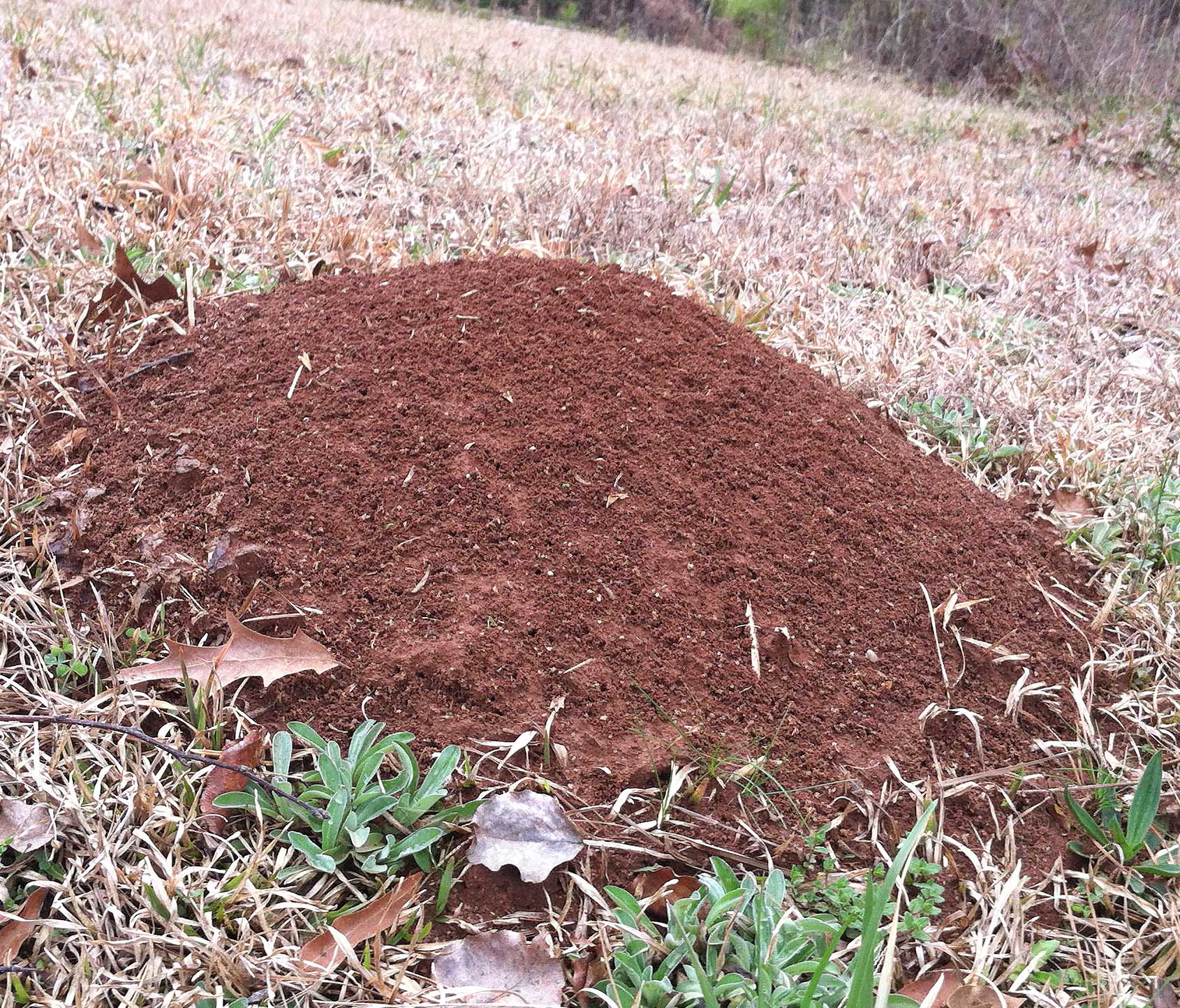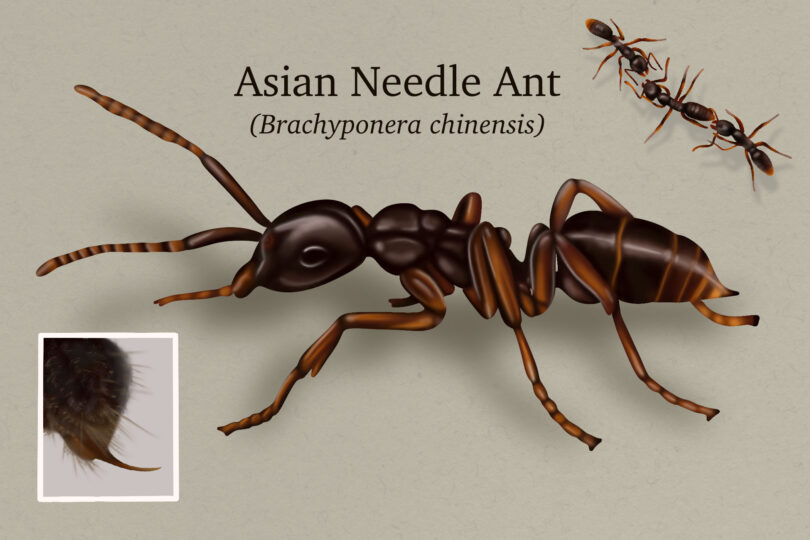Spotting an active gardener is easy – just check for dirt under their fingernails. Small, red sores on the hands above those dirty nails mean that gardener has braved the pain and misery of fire ant bites to remove encroaching weeds from their around cherished flowers and vegetables.
The red imported fire ant was introduced through the port of Mobile, Alabama, from South America in the 1930s. The stinging pest now infests more than 325 million acres from California throughout the southern U.S. and Puerto Rico. Early eradication efforts failed due to the ant’s biology and ability to rapidly reproduce.
Imported fire ants disturb native habitats and home landscapes and have created an enormous impact on the U.S. economy. In fact, fire ants are estimated to have a $1.2 billion impact on the state of Texas alone.
Fall is the best time to control fire ants, so start next year’s battle plan now. Fire ant colonies have been growing all summer and will have reached their peak size by the end of September. It is best to attack these colonies before cooler weather sends them deep into the ground.
For fall treatment, University of Georgia Cooperative Extension experts recommend using a fire ant bait product. Worker ants pick up the bait and transport it back to the colony. Because the active ingredient is relatively slow to act, there is time for the material to be fed to the queen. Baits are also effective at controlling mounds that are not large enough to be seen.
When using fire ant baits follow these steps:
• Do not disturb the mounds or apply baits directly to the mounds.
• Use a broadcast spreader and apply bait over the entire lawn.
• Treat the lawn in the late afternoon when temperatures are between 60 and 90 degrees Fahrenheit.
• Treat when no rain is predicted for 24 hours.
• Once a bag of bait has been opened, try to use the entire product within a few days. The oil carrier can degrade over time, and the ants may not take it if the product sits out.
• Follow the label on the product – it’s the law!
There are a number of home remedy treatments for controlling fire ants, but it should be noted that they rarely eliminate colonies. Some of the remedies are simply old wives’ tales.
Boiling water poured on an active mound can be effective, but only if enough water is poured onto the mound to fully kill all ants. This method is time intensive and potentially dangerous to the individual carrying the boiling water. Boiling or hot water can also kill or damage nearby plants, turf and non-target soil organisms.
Ants are rumored to explode after eating grits due to the expansion of the dry starches. The truth is that only larval-stage ants digest solid foods; workers only feed on liquids or greasy materials.
For more information on controlling fire ants, see the UGA Extension publication "Managing Imported Fire Ants in Urban Areas" at extension.uga.edu/publications/detail.cfm?number=B1191.








